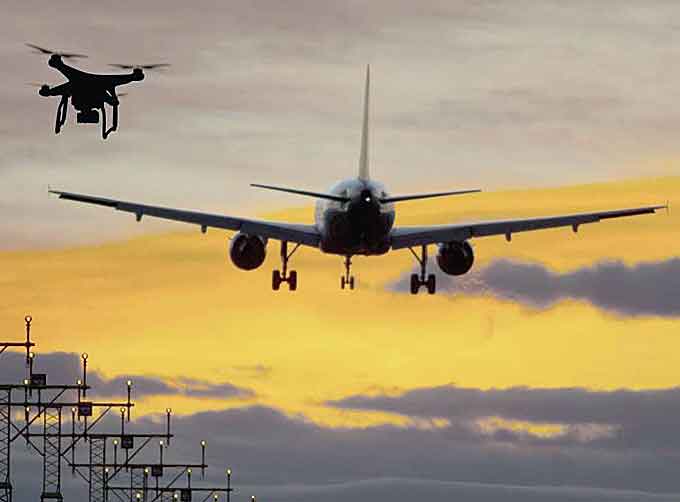The Federal Aviation Administration (FAA) has approved nine new partners to its Low Altitude Authorization and Notification Capability (LAANC) initiative, an innovative collaboration between the FAA and the drone industry that provides near real-time processing of airspace authorizations for Part 107 drone operators nationwide who fly in controlled airspace.
Following the FAA’s successful prototype, the initiative was simultaneously opened to additional air traffic control facilities and to new industry partners.
The five-month onboarding process that began in April resulted in nine new LAANC partners – Aeronyde, Airbus, AiRXOS, Altitude Angel, Converge, DJI, KittyHawk, UASidekick and Unifly.
(Learn More. FAA Acting Administrator Dan Elwell tells companies about why they should consider applying to be a UAS Service Supplier. Courtesy of the FAA and YouTube. Posted on Mar 29, 2018.)
The nine join five companies – AirMap, Harris Corp., Project Wing, Skyward and Thales Group – that have already met the technical and legal requirements to provide LAANC Services.
LAANC uses airspace data, including UAS facility maps, which shows the maximum altitude around airports where the FAA may authorize operations under Part 107 in controlled airspace.
For example, a pilot that’s going to use a drone to conduct an inspection, capture photos and videos or herd birds away from airports, can now send their applications to fly in controlled airspace to LAANC.

How Does LAANC Work?
LAANC automates the application and approval process for airspace authorizations.
Through automated applications developed by an FAA Approved UAS Service Suppliers (USS) pilots apply for an airspace authorization.
Requests are checked against airspace data in the FAA UAS Data Exchange such as temporary flight restrictions, NOTAMS and the UAS Facility Maps.
If approved, pilots receive their authorization in near-real time.
LAANC also provides FAA’s Air Traffic visibility into where and when planned drone operations will take place.
The program gives drone operators the ability to interact with industry developed applications and obtain near real-time authorization from the FAA.
(Learn More about LAANC. FAA Acting Administrator Dan Elwell announced the Low Altitude Authorization and Notification Capability. Courtesy of the FAA and YouTube. Posted on Apr 30, 2018.)
How does LAANC benefit Industry?
The FAA is dedicated to ensuring drones are able to operate safely in the same airspace with manned aircraft.
The LAANC capability offers industry the opportunity to work with the agency as we develop a UAS traffic management system.
Companies approved to provide LAANC Services are known as Approved UAS Service Suppliers (USS).
How Does LAANC Benefit Me – The Drone Pilot?
 Under the small UAS rule, pilots or operators planning to fly in controlled airspace under 400 ft. must receive an airspace authorization from the FAA.
Under the small UAS rule, pilots or operators planning to fly in controlled airspace under 400 ft. must receive an airspace authorization from the FAA.
LAANC dramatically decreases the wait time experienced with the manual authorization process and provides greater flexibility in operational planning.
Through LAANC pilots and drone companies can:
- Apply to receive a near real-time authorization for operations under 400 feet in controlled airspace around airports.
- Request to fly above the designated altitude ceiling in a UAS Facility Map, up to 400 feet.
- Applicants may apply up to 90 days in advance of a flight and the approval is coordinated manually through the FAA.
Note: If you are planning an operation in controlled airspace that requires a waiver AND an airspace authorization you must apply for both through the Drone Zone.



















